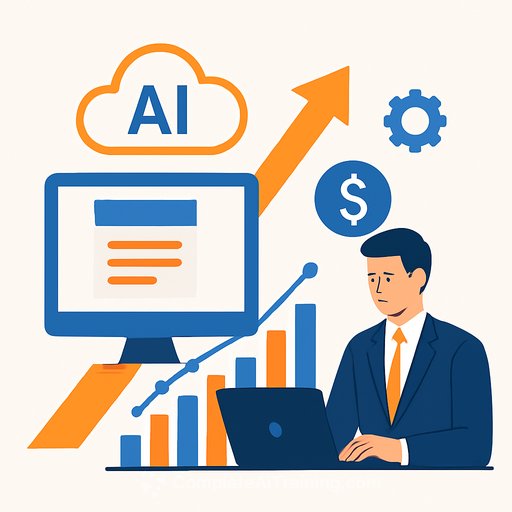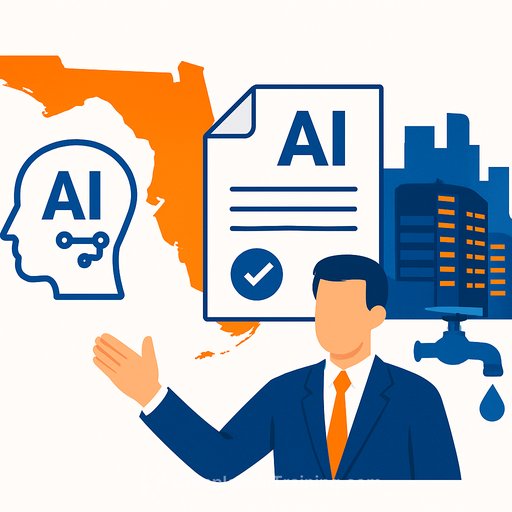AI won't digitise broking - but it will digitise everything around it
Brokers win on judgment, trust, and negotiation. That core won't be replaced. But everything around it-intake, analysis, preparation, documentation, compliance-gets sharper, faster, and more consistent with AI.
The result isn't fewer brokers. It's brokers who spend more time in the room with clients and underwriters, armed with cleaner data, better insight, and a tighter story.
What stays human
- Complex risk framing, market strategy, and negotiation.
- Client trust, deal choreography, and reading the room.
- Final judgment on coverage, trade-offs, and timing.
AI supports these moves by removing the drag-manual comparisons, document hunts, and repetitive admin.
Where AI creates immediate value across the broking lifecycle
Pre-bind intake and triage
Parse submissions, slips, SoVs, financials, and loss runs into structured data in minutes. Auto-route to the right team by class, size, territory, and complexity. Flag missing info early.
Market mapping and appetite matching
Match risk attributes to likely markets and capacity. Auto-build a target market list with past placement outcomes, appetite signals, and current pricing themes. Suggest sequence and pitch angles.
Quote and wording comparison
Line-by-line comparison of endorsements, exclusions, and sub-limits. Highlight gaps versus client needs and last year's terms. Propose neutral wording options and alternative structures to consider.
Placement support
Generate broker notes, talking points, and deal summaries. Track agreement status and document provenance. Reduce back-and-forth on standard asks so humans can focus on the edge cases.
Client advisory
Package insights from portfolio benchmarks, peer programs, and industry loss trends. Create board-ready summaries and renewal packs with clear options and trade-offs.
Post-bind servicing
Automate endorsements, COIs, bordereaux checks, and invoice reconciliation. Surface anomalies before they become E&O exposure.
Claims context
Summarise claim histories, coverage positions, and likely friction points. Prepare clients for the conversations ahead; give adjusters clean, relevant context.
Compliance and audit
Create an always-on audit trail of decisions, sources, and approvals. Auto-check sanctions, licensing, and placement rules.
Portfolio analytics
Spot concentration, identify profitable niches, and time re-marketing. Feed producers with high-likelihood opportunities.
Data: the bottleneck and the unlock
Tools matter, but data quality decides the outcome. Start with a simple target model: risk, terms, markets, outcomes, interactions. Treat MRC v3, bordereaux, CRM, and claims as one system-even if the plumbing is messy at first.
- Standardise ingestion: slips, binders, endorsements, emails, and meeting notes.
- Link every placement artifact to the client, program, and decision record.
- Keep a clean layer for "ground truth" and versioned AI outputs.
Governance that keeps you safe and fast
- Use private models or approved vendors; keep client data out of public endpoints.
- Log prompts, outputs, and human approvals for auditability.
- Define redlines: what AI can draft versus what only a licensed broker can approve.
- Regularly test for bias and accuracy on your data and wordings.
For reference frameworks, see UK data protection guidance on AI from the ICO here.
London market notes
AI aligns with ongoing modernisation-structured placements, digital messages, and cleaner records. Use market standards (e.g., MRC v3) to cut rework across systems and partners.
Keep an eye on platform interoperability and audit expectations as programs like Blueprint Two progress at Lloyd's. Build your data model to survive vendor changes.
Build vs. buy: a pragmatic view
- Buy for OCR, document classification, email triage, sanctions, and common wordings compare.
- Build where your edge lives: market strategy models, client-specific benchmarks, proprietary coverage playbooks.
- Use retrieval-based approaches tied to your clause library before you consider fine-tuning models.
- Design everything so you can swap models without breaking workflows.
90-day quick wins
- Submission desk: auto-extract fields, fill missing data prompts, and route to teams.
- Wording compare: highlight changes vs. expiring; draft neutral alternatives for review.
- Producer copilot: meeting prep from CRM + prior placements; suggest next steps.
- Renewal packs: auto-generate drafts with claims summaries, benchmark charts, and options.
- Bordereaux QC: anomaly detection and exception routing.
- Compliance: automated sanctions checks with documented evidence.
Metrics that prove it's working
- Time to first response on submissions.
- Quote-to-bind ratio and average days to bind.
- Endorsement turnaround time and rework rate.
- E&O incidents and audit exceptions.
- Producer capacity (client-facing hours per week).
- Client NPS at renewal and after claims.
Common pitfalls to avoid
- Messy sources: Bad inputs create bad outputs. Clean the top five document types first.
- Shadow IT: Centralise model access and data use; kill unapproved tools quickly.
- Hallucinations: Always cite sources; block free-text generation for regulated statements.
- Vendor lock-in: Keep your data and prompts portable; separate workflow from model choice.
Team structure that makes it stick
- Product owner from broking with real authority.
- Small enablement squad: data engineer, prompt/UX specialist, and risk/compliance partner.
- Broker champions by line who co-design and train peers.
- Weekly release cadence; ship small, measure, adjust.
The broker's edge with AI
AI doesn't replace your judgment. It clears the noise so your judgment lands harder. The firms that win will treat AI as standard kit-like email once was-not a side project.
Start with the processes closest to the client and the deal. Prove speed and accuracy, build trust, then widen the scope.
Action plan
- Week 1-2: Map your intake-to-bind workflow. Pick three use cases: submission extraction, wording compare, renewal pack drafts.
- Week 3-6: Pilot with one line and two markets. Track cycle time, hit rate, and rework. Keep humans in approval.
- Week 7-12: Expand to two more lines. Add audit logging, access controls, and exception handling.
- Quarter 2: Integrate with CRM and document management. Start portfolio analytics and producer copilot.
Upskill your team
If you want broker-ready, practical training on prompts, office workflows, and safe deployment, explore courses by job here. For hands-on tools and templates, see the latest AI courses here.
The bottom line: AI won't digitise broking itself. It will digitise everything around it-so you can spend more time doing the work that actually moves the deal.
Your membership also unlocks:






